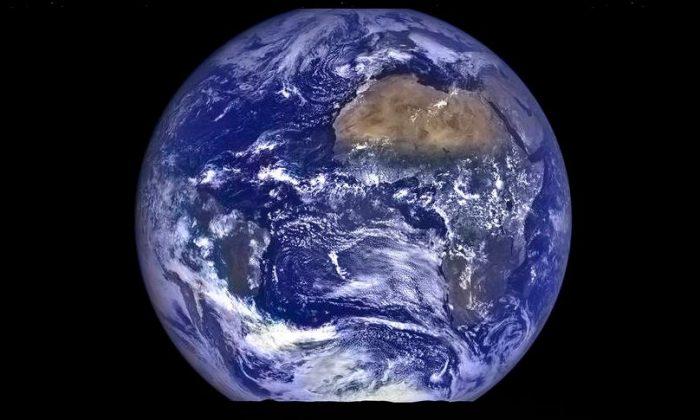NASA has released a unique view of Earth recently captured by a spacecraft in orbit around the moon.
The composite image shows Earth appearing to rise over the lunar horizon from the viewpoint of the Lunar Reconnaissance Orbiter.
The large tan area in the upper right is the Sahara Desert, and just beyond is Saudi Arabia. The Atlantic and Pacific coasts of South America are visible to the left, according to the space agency.
“The image is simply stunning,” said Noah Petro, Deputy Project Scientist for the orbiter at NASA’s Goddard Space Flight Center in Maryland, in a statement.
“The image of the Earth evokes the famous ‘Blue Marble’ image taken by Astronaut Harrison Schmitt during Apollo 17, 43 years ago, which also showed Africa prominently in the picture.”

The orbiter was launched in June 2009 and has collected data, including images, since arriving near the moon and starting to orbit it.
The composite image is composed from a series of images taken on Oct. 13.
“From the Earth, the daily moonrise and moonset are always inspiring moments,” said Mark Robinson of Arizona State University in Tempe, principal investigator for the orbiter, in the statement.
“However, lunar astronauts will see something very different: Viewed from the lunar surface, the Earth never rises or sets. Since the moon is tidally locked, Earth is always in the same spot above the horizon, varying only a small amount with the slight wobble of the moon. The Earth may not move across the ’sky,' but the view is not static. Future astronauts will see the continents rotate in and out of view and the ever-changing pattern of clouds will always catch one’s eye, at least on the nearside. The Earth is never visible from the farside; imagine a sky with no Earth or moon—what will farside explorers think with no Earth overhead?”





